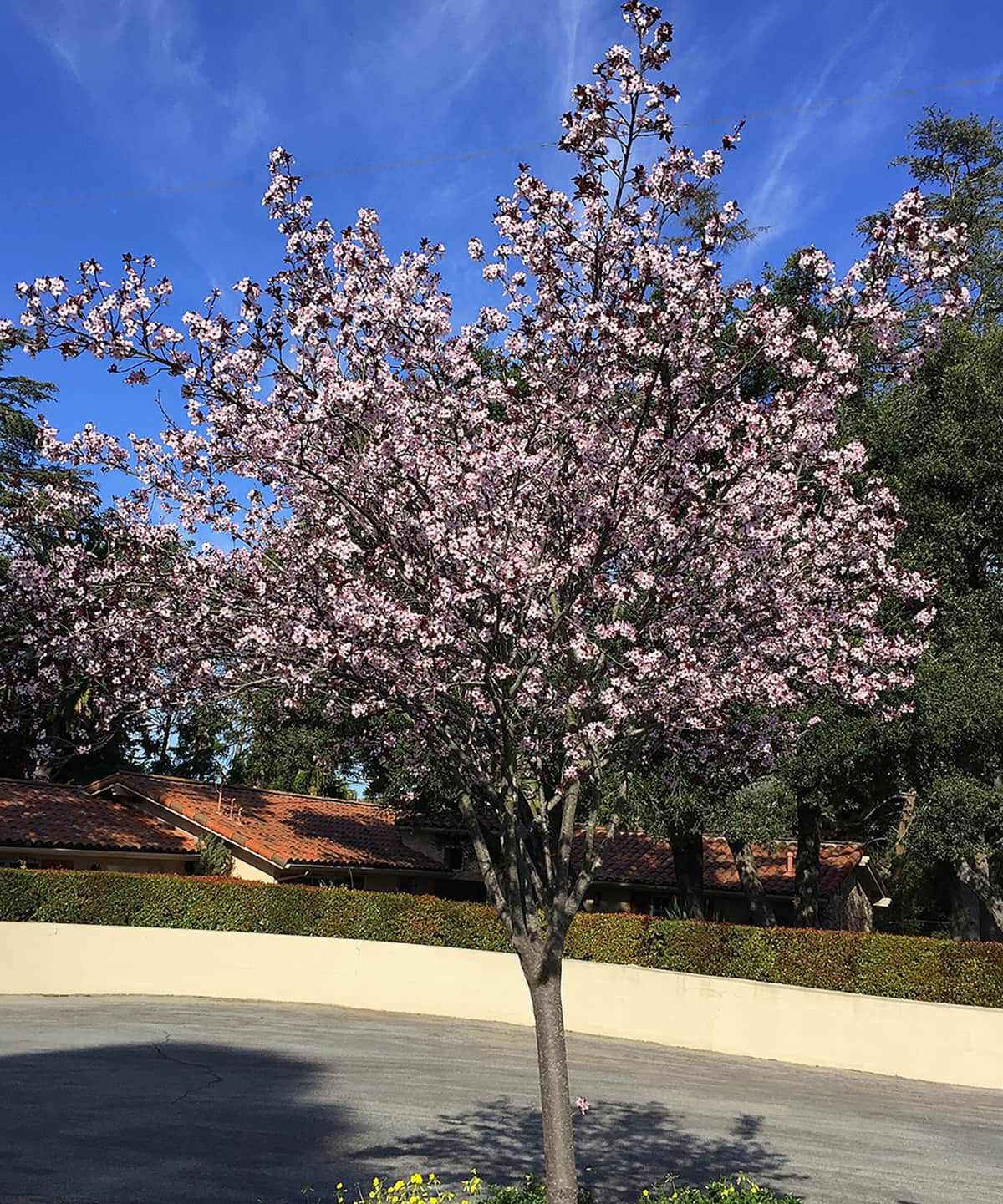

#RED LEAF FLOWERING PLUM TREE SKIN#
The fruit’s skin color ranges from yellows and reds to blues, purples, and almost black. They generally produce a rounded fruit around 2 inches in diameter. Japanese plum tree types tend to grow more fanned out than their European cousins. They are great fruit trees for states like Tennessee and other southern states.

Gardeners enjoy their early spring blossoms and, on average, will thrive well in climate zones 5 through 9, making them versatile for many U.S. These trees are ideal for growing in dry and mild climates. Japanese plums made their appearance in the United States back in the late 1870s. Almost every planting zone on the globe can host a suitable plum tree for cultivation. Suffice to say that all plum tree types are cultivated and enjoyed worldwide. We will get into some of the differences between the three later. Most American plum tree cultivars are a hybrid of native North American species and various Japanese species.

Japanese (Prunus salicina) and European (Prunus domestica) are the most commonly cultivated, representing the majority of plums you find in the marketplace.Ī third plum tree type is the American Plum Tree (Prunus americana), also known as bush plums. Aside from bearing delicious fruit, plum trees are also beautiful additions to any landscape, with lovely foliage and brilliant flowers in the spring.Īlthough they are thriving throughout many areas globally, plum tree types fall into three general variety groups. The truth is that plums have a wide variety of colors, shapes, and sweetness to them. Its gorgeous spring blossoms, attractive foliage, and adaptability make it a great choice for gardeners looking to add some color and interest to their outdoor space.When you think of plums, you probably picture an oval-shaped purple fruit with a pit and a little bigger than a golf ball. Overall, the Prunus cerasifera, or Flowering Plum tree, is a stunning and low-maintenance tree that adds beauty and interest to any landscape. In addition to its ornamental value, the Flowering Plum tree is also a great choice for attracting beneficial insects such as bees and butterflies to your garden, which can help to pollinate other plants and promote a healthy ecosystem.
#RED LEAF FLOWERING PLUM TREE FULL#
It prefers full sun but can also tolerate some shade, making it a versatile addition to any garden or yard. This tree is easy to care for and adapts well to a variety of soil types and climates, making it an ideal choice for many regions. The tree's leaves are also noteworthy, with their attractive reddish-purple color that can add a pop of interest to your landscape. The flowers are followed by dark purple, edible fruit that can be used to make jams and jellies. The Flowering Plum tree produces a breathtaking display of pink or white flowers in early spring, creating a magnificent spectacle of color and beauty in any garden or yard. This deciduous tree typically reaches a height of 20 to 25 feet and a spread of 15 to 20 feet, making it an excellent choice for smaller landscapes. Prunus cerasifera, commonly known as the Flowering Plum, is a stunning ornamental tree that is prized for its profuse display of early spring blossoms.


 0 kommentar(er)
0 kommentar(er)
